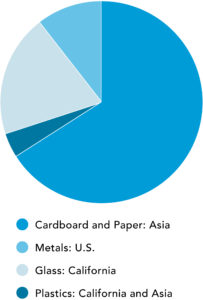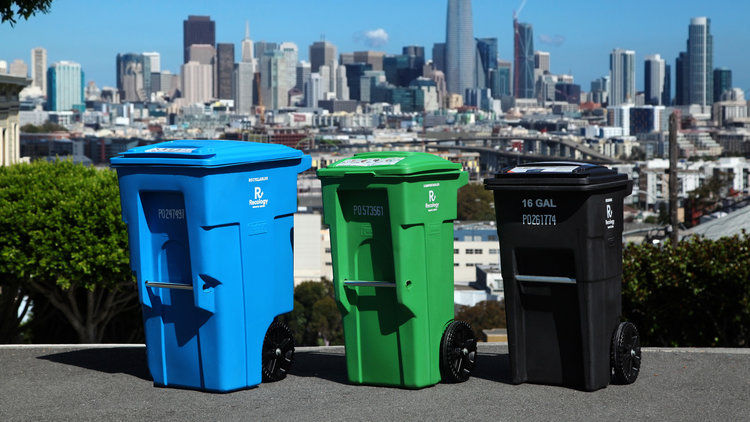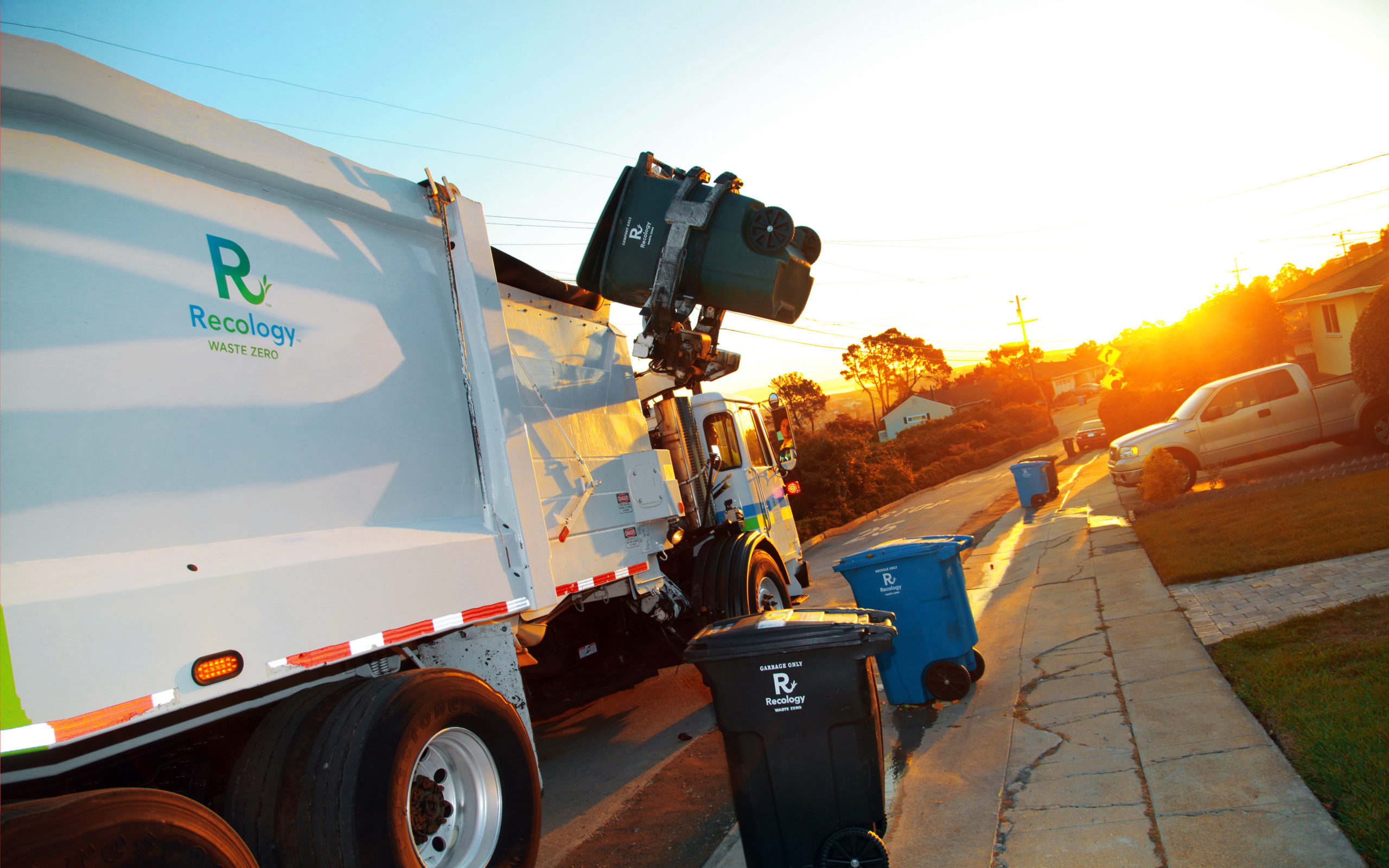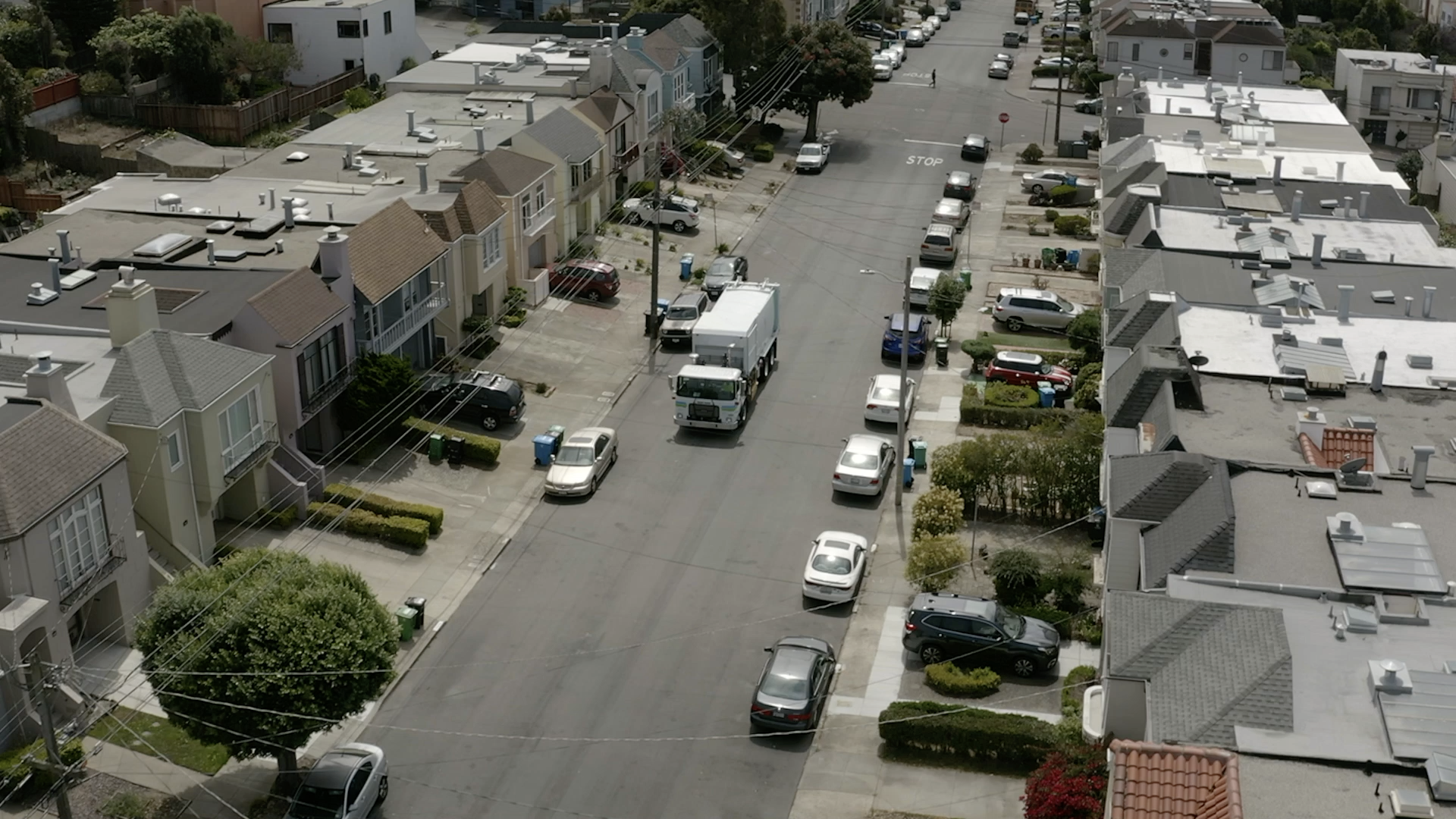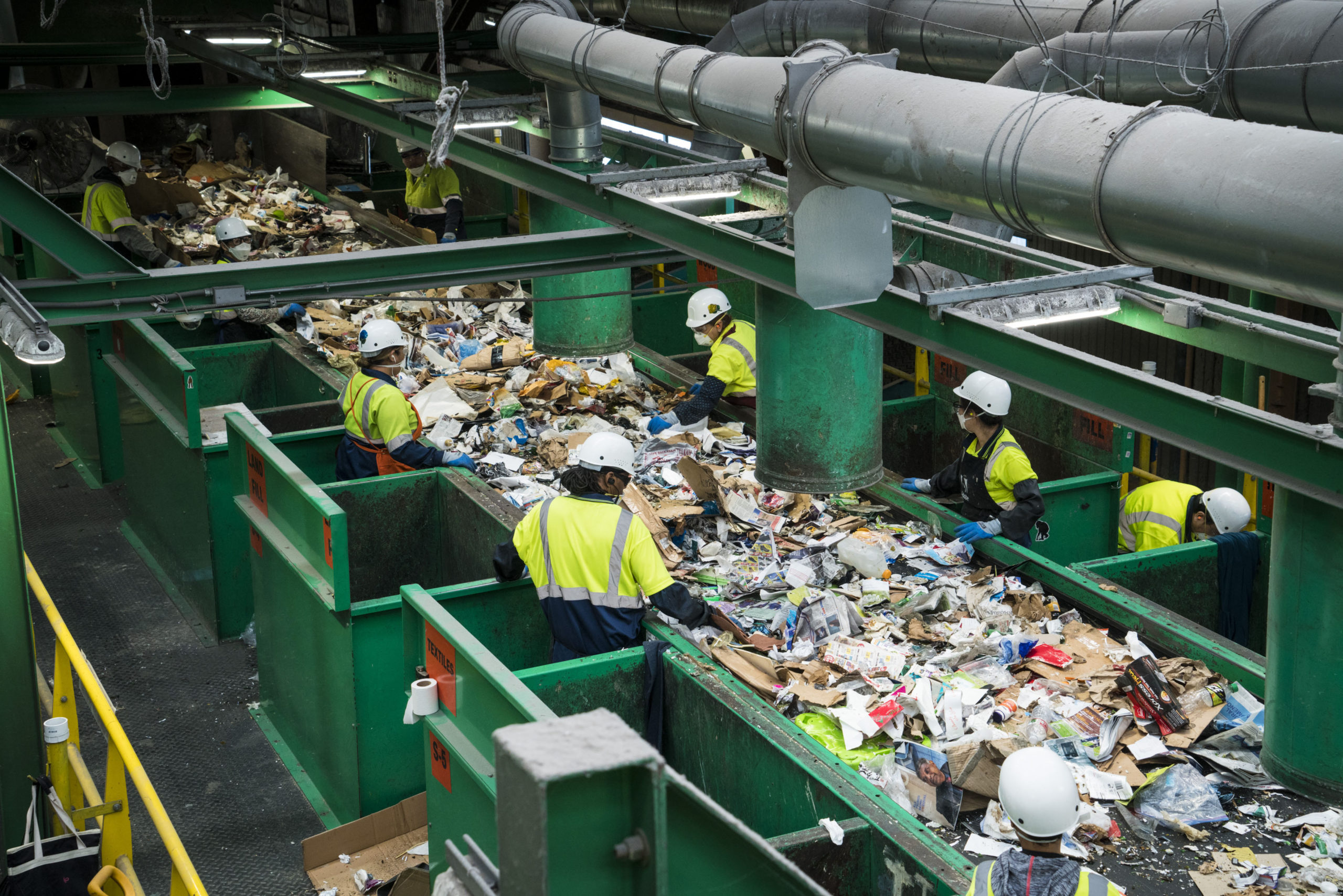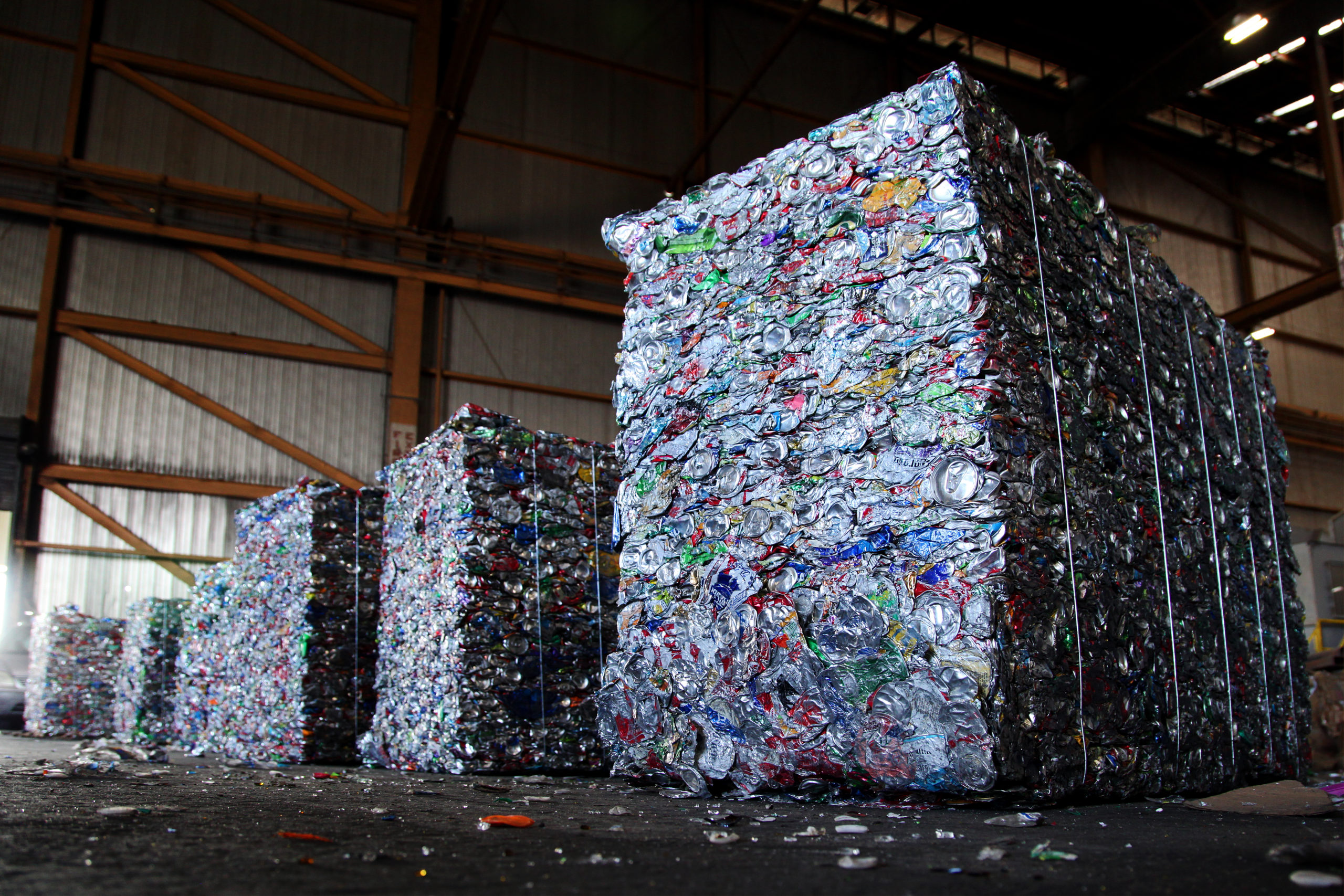Have you ever wondered what happens to recyclables after you place them in your blue bin? Had a friendly debate with a roommate or family member about which materials belong in the bin in the first place?
From the simple act of placing materials into curbside bins and collecting recyclables from residents and businesses throughout the city, to the innovative processing and sorting technology that prepares materials for sale across the global marketplace, the recycling process is more than initially meets the eye.
When products are made from recycled materials, there is less demand to mine, deforest, and process virgin materials. Using recycled materials leads to significant energy savings, reduced greenhouse gas emissions, and lessened impacts on natural ecosystems. Recycling programs that provide these materials are critical components of our local and global supply chains that manufacture the products and packaging we use every day.
In San Francisco, residents and businesses recycle nearly 115,000 tons of paper, cardboard, glass, metals, and plastics annually, helping avoid greenhouse gas emissions equal to removing 75,000 cars from the road for a year.
Read more about the benefits of recycling in our Sustainability Report, available here.
Recyclables in San Francisco generally fit within four material categories: paper and cardboard, metal, glass and plastic.
Materials are collected in one bin and then separated out by material type at Recycle Central at Pier 96, our recycling facility in Bayview–Hunters Point. While some materials, like a cardboard box or glass bottle, are easily recoverable, many products and packaging currently in the marketplace not designed with recyclability in mind.
Recology facilities manage materials based on size, density, shape, and other characteristics making use of innovative technologies to keep pace with the ever-changing marketplace for packaging and products.
However, the question remains, what belongs in the blue bin?
ACCEPTED MATERIALS
Recyclable materials should be loose (not bagged) and remain empty, clean and dry when placed in the bin to avoid contaminating other materials.
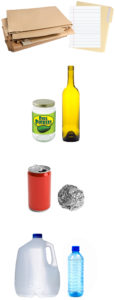
COMMONLY MISPLACED MATERIALS
Materials that do not belong in the blue bin are known as contaminants. These materials often cause operational issues at the recycling facility and impact the marketability of correctly placed recyclable materials.
Make sure to keep these commonly misplaced items out of the blue bin:
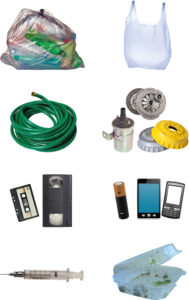
Looking for educational information? A good place to start is with the actual bin!
Stickers on bins provide helpful information about what belongs – and what doesn’t! Recology also offers educational posters, flyers and customizable signage for residents and businesses.
Visit whatbin.com and sfrecycles.org to search for a specific material!
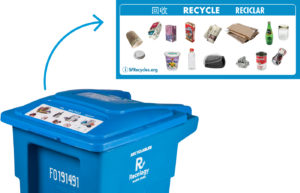
Recology and the City of San Francisco’s Department of the Environment offer a variety of digital and in-person resources for residents, businesses, schools, property managers and more to learn about recycling.
Sign up for a presentation, training, webinar or facility tour to learn more!
Each day more than [XX] recycling trucks travel the streets of San Francisco collecting recyclables.
After completing their routes, the trucks head to Recycle Central at Pier 96 in the city’s Bayview neighborhood. This 200,000 ft² Material Recovery Facility (MRF) is one of the largest and most advanced recycling facilities in the United States.
Recology employees and an series of advanced processing technologies including optical sorters, powerful magnets, and state-of-the-art robotics, sort the inbound mixed recyclables into distinct commodities that are sold in both domestic and international commodity markets.
Sorted commodities are baled and prepared for sale.
Sorted commodities are baled and prepared for sale. Depending on the material and available market, bales are transported to their next destination and recycled into a variety of products. In some cases, like glass and aluminum, the input is identical to the output – a soda can is recycled back into a soda can, and a glass bottle becomes another glass bottle. In other cases, like paper, the material degrades over time as it is recycled.
International policies ranging from China’s National Sword policy to the more recent Basel Convention Plastic Waste Amendments impact the sale and marketability of certain materials and contribute to an ever-changing commodities market.
Recology remains committed to socially and environmentally responsible resource recovery practices and continues to seek opportunities to develop domestic markets and invest in processing technology that improves our ability to recover valuable materials from the waste stream.
An overview of San Francisco’s recyclables sold from January – April 2021, including the final local or international destination, is outlined here. This information will be updated every six months to reflect markets for San Francisco’s recyclables.
San Francisco Recyclables Commodities:
January – April 2021
